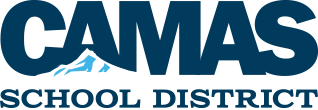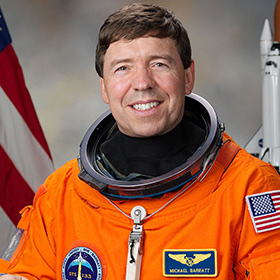The safety of our students and staff is a top priority. We act on this commitment to safety every day. Please take a moment to explore our safety program outlined below.
Our buildings are equipped with a variety of safety features, including:
- Video Entry Systems, wall-mounted cameras, and microphones located outside our schools’ main entrances, that are used by visitors to communicate with school personnel to gain access to the building.*
- *Camas High School (CHS) has a controlled-entry vestibule, but no video entry system. CHS has a heavy flow of visitors and students entering/leaving campus through the school’s main entrance throughout the school day, which creates other safety concerns such as: Queues of visitors and students outside of the building during a possible external threat as well as visitors and students entering doors through which others are exiting or even seeking other unmonitored access points. CHS has additional safety practices and support staff identified below.
- Panic buttons that discreetly contact first responders.
- Lockdown buttons that instantaneously lock all exterior doorways and notify first responders.
- When a school is in a lockdown campus-wide communication and instructions are carried out via electronic clocks. These clocks have a speaker and a display screen to communicate important information. They are in nearly every classroom as well as offices and common areas.
- Over 300 interior and exterior digital surveillance cameras on every CSD campus. These cameras allow for live monitoring of schools as well as the storage of security footage for two weeks or longer.
Our schools are designed with building security and safety in mind.
Many CSD schools have controlled-entry vestibules, which are lobbies with locked internal doors or walls that channel visitors into the main office and prevent direct access to the school. All new CSD schools will be built with controlled-entry vestibules.
All CSD portables are equipped with locksets that can be locked from the inside.
We plan, prepare, and practice for a variety of safety scenarios.
All CSD employees and volunteers have passed a state and federal fingerprint background check. These checks are just one part of the rigorous process by which we select teaching, administrative, and support staff.
All volunteers have passed a Washington State Patrol background check.
All CSD school leaders participate in the following trainings:
- Annual Safe Schools Trainings, which include such topics as Sexual Harassment, Discrimination, Bullying, and Health Emergencies. In fact, completion of these trainings is required of all CSD staff members.
- Annual Clark County Safety Summit, a day-long training that focuses on a topic at the forefront of public safety as well as sessions on best safety practices.
- Monthly Administrative Council safety trainings.
Each CSD school:
- investigates and acts on all safety concerns;
- has an emergency response plan that contains detailed action plans for a variety of emergent circumstances;
- is regularly inspected for fire safety and water quality;
- conducts mandatory, monthly safety practices related to the following situations: Evacuation, Earthquake, Shelter-in-Place, and Internal and External Lockdown. Many campuses practice AED response. All safety practices are recorded on Rapid Responder software–see “Safe Supports”;
- has a Building Safety Committee, which meets monthly. Representatives from each building attend district safety meetings where they review and resolve building safety issues; and
- has visitor screening/sign-in procedures. Visitors are required to register at the main office before entering the building. CHS uses Raptor Visitor Management Software, which performs a national sex crimes database search on-campus visitors prior to entering the school.
The CSD consults regularly with local law enforcement and first responders about school safety and partners with ESD 112 for risk management and student threat assessment services.
We commit resources and personnel to support student and staff safety.
All CSD schools are registered on Rapid Responder, an online resource for first responders that contains school site profiles. These profiles include an aerial map of each campus, staff names, interior/exterior building photographs, and facility blueprints. Schools update this information annually.
CHS has four campus security monitors. Our district’s School Resource Officer (SRO) is primarily based at CHS but serves all CSD campuses.
Custodial, Grounds, Maintenance, and Transportation staff members all contribute to safe school environments by preventing or responding to safety issues. These employees notice and address unsafe conditions and perform essential safety tasks such as checking roads on icy mornings, responding to Help Desk tickets, performing repairs and maintenance, and assisting with emergency situations.
The CSD supports the social and emotional learning of its students, hiring dedicated staff and receiving grant funding for programming. The district is initiating transition and mentoring programs as well as opportunities for students to share their voice on a variety of topics including safety.
School Counselors and Nurses provide key support services to students and families.
We are dedicated to keeping families informed in a transparent, timely manner.
The CSD utilizes an emergency notification system to communicate with staff and parents through texts, emails, or phone calls, whichever is most appropriate for the situation at hand.
The CSD welcomes the reporting of any and all safety concerns by students and parents and takes all concerns seriously.
The CSD is committed to keeping parents informed through timely and transparent communications. In exceptional situations related to student safety, we share an overview of what has happened, but do not include details such as student identity or the school’s disciplinary response. Student privacy laws prevent us from disclosing such information.
We recognize safety is ongoing.
We constantly evaluate our safety program and look for strategies and resources that will make us better prepared and more secure.
Safety Alert
Students are often the first to hear about student safety concerns and are encouraged to share them confidentially with staff using this form.
Safety Feedback
On March 20 and March 27, we hosted listening posts to collect parent concerns and ideas about student safety. Click the link below to view the presentation.













